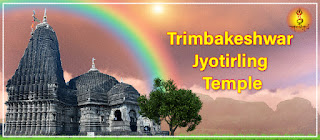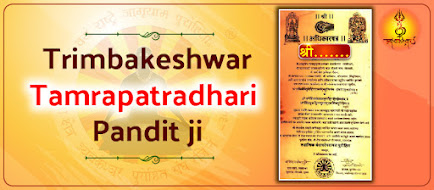Trimbakeshwar Jyotirlinga History And Mythological Story
There are 12 awakened Jyotirlinga temples of Mahadev are located in India. These 12 temples are very ancient, each has a historical story behind its origination. These ancient 12 Jyotirlinga temples in India are the attraction of all pilgrims. All Shiva devotees believe that Mahadev himself has appeared at these 12 places. One of these 12 Jyotirlinga temples, We are going to see the story about the creation of Trimbakeshwar Jyotirlinga temple.
Trimbakeshwar Jyotirlinga Temple is located in a small village called Trimbak in the city of Nashik in Maharashtra. Trimbakeshwar temple is built at the foothill of Brahmagiri mountain in the Sahyadri mountain range of Nashik city. From this Brahmagiri mountain, the largest river in Maharashtra called the Godavari River originated, and the river is also known as the Ganga in Nashik. There is an exciting story behind the origin of this Godavari river in Nashik.
Trimbakeshwar Jyotirlinga:
It is believed that Rishi Gautama lived in his ashram on Brahmagiri mountain near Trimbakeshwar and many sages took shelter in his ashram. Once upon a time, there was a famine of many years. Rishi Gautama daily goes to his farm in the area of his ashram to sow paddy every day. Because of famine, people are affected by a pang of hunger. Gautam Rishi used to feed the sages in his ashram.
Seeing the faith and hard work of Rishi Gautama, Varun God was pleased and arranged rain in his farm area. Due to the end of the famine, many food grains came to Sage Gautama. Seeing the increasing virtue of Gautama Rishi, Lord Indra became jealous of Gautama Rishi, and Lord Indra ordered Lord Varun to rain the entire Trimbakeshwar. A lot of food was damaged due to heavy rains. The rishis in the ashram started running out of food so all the rishis got angry and started leaving, but Gautama rishi stopped them all and continued to feed them by preparing food for them. The sages in the ashram became jealous of Gautama Rishi by seeing his increasing punya (merit), so they all made a plan to reduce the virtue of Gautama Rishi. All the sages sent a cow to sage Gautama's Farm. While sage Gautama tried to frighten the cow away from the field, the cow fell down and pretend to die. Rishi Gautama felt that I had committed the sin of killing a cow. Displeased sage Gautam with himself started worshiping Lord Mahadev to eliminate his sins. Mahadev is pleased with Sage Gautama's worship and appeared in front of him. Sage Gautama expressed his wish to Mahadev to bathe in the
water of the river Ganga to get rid of sins. Then Mahadev brought down the Ganges to the earth. The river Ganga first originated from Brahmagiri mountain. But Ganga disappeared from there because the river Ganga was not ready to live alone on earth. She requested Mahadeva to come with her to earth. Then Mahadev appeared in the form of Jyotirlinga at the foothill of Brahmagiri mountain. Today this Jyotirlinga is known as Trimbakeshwar Jyotirlinga.
At a distance of 400 meters near the Trimbakeshwar temple, Kushavarta Kund is built where the river Ganga re-emerges. And today Kushavart Kund is the source of the river Ganges. Today this river is known as Godavari after the name of Gautama Rishi.
Trimbakeshwar Temple :
Today's Trimbakeshwar Jyotirlinga Temple is built by Nanasaheb Peshwa (Peshwa Balaji Baji Rao) in 1755-1786 AD. The entire temple is built with black stones. The Jyotirlinga of Trimbakeshwar is not only a symbol of Mahadeva but also of Brahma, Vishnu, and Mahesh known as the Trinity. This Jyotirlinga appeared with three thumb-size lingas.
Trimbakeshwar Temple is a very popular place for performing important Hindu rituals like worship, shanti, and havan. During the Ramayana period, Rama performed the Shradh ritual of his father Dasharath at Trimbakeshwar near the Godavari River. Now the temple has started a live-streaming darshan facility to have the darshan of Trimbakeshwar Jyotirlinga at home. Also, you can book the important Pooja performed here from the official website of Trimbakeshwar.
Trimbakeshwar has a legacy of a very special, intelligent, and knowledgeable Tamrapatradhari Pandit. Tampratradhari Pandit is the local Pandit of Trimbakeshwar. These Pandits have been helping devotees to worship here for many years. Tamrampatra means copper plates with ancient scripture which was given by Nanasaheb Peshwa to Pandit's resident of Trimbakeshwar. The Tamrapatra shows proof that the Pandit was an authentic Pandit.
Pooja performed by Tamrapatradhari Pandit is very fruitful and gives you a great spiritual experience of your Pooja. During Pooja booking Tamrapatradhari Pandit will tell you the best muhurta for Pooja, Pooja material, what clothes to wear, accommodation in Trimbakareshwar, etc. They will help you with everything.
Pooja Performed In Trimbakeshwar :
Narayan nagbali Pooja
Tripindi Shradh Pooja
Kumbh vivah
Rudrabhishek Pooja
Mahamrityunjay mantra jaap Pooja
Shanti, Havan etc.
Narayan Nagbali Pooja and Tripindi Shradh Pooja are the most important rituals that perform only at Trimbakeshwar.



.jpg)
Comments
Post a Comment